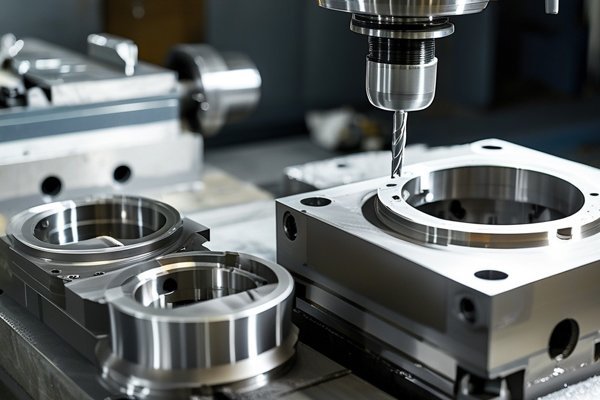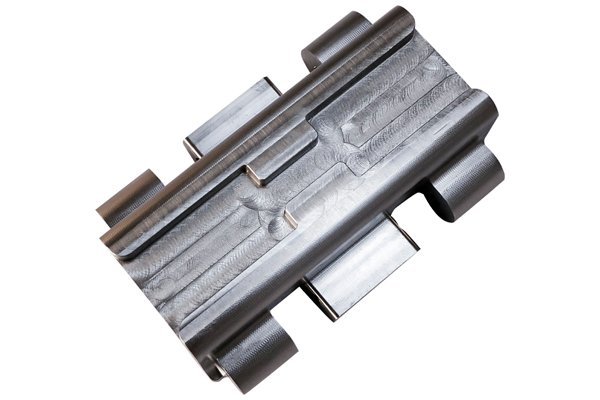: The Digital Revolution in Manufacturing
Did you know that the CNC (Computer Numerical Control) machining market was valued at approximately USD 68 billion in 2020 and is projected to reach around USD 100 billion by 2028? This astounding growth can primarily be attributed to the increasing demand for precision-engineered components in key industries like aerospace, automotive, and consumer electronics. High precision and the ability to manufacture complex designs position CNC machining as a fundamental technology in modern manufacturing.
The significance of meeting customers’ design requirements in CNC machining cannot be overstated. In a world where customization reigns supreme, customers expect that their specific design needs and applications are fulfilled with utmost accuracy. How can CNC machining plants achieve this? In this comprehensive guide, we will explore effective strategies, processes, and techniques that CNC machining plants can use to ensure that they meet customer specifications efficiently and effectively.
—
Chapter 1: Understanding Customer Requirements
1.1 Effective Communication
Clear communication is the cornerstone of fulfilling customer specifications. CNC machining plants must strive to establish strong channels of communication with their clients. This includes not only listening to the client’s needs but also proactively suggesting improvements based on industry knowledge and expertise.
Strategies for Effective Communication:
1.2 Gathering Design Specifications
Before any machining begins, it is imperative to gather comprehensive design specifications from the customer. This document should include:
1.3 Utilizing Design Feedback
An essential part of meeting design requirements includes iterative feedback. After presenting initial designs, be open to client feedback and prepared to make necessary adjustments based on their input.
—
Chapter 2: Utilizing Cutting-Edge Technology
2.1 Advanced CNC Machinery
Investing in modern CNC machines features essential capabilities such as precision cutting, multi-axis machining, and the ability to handle various materials. Features like these allow for a higher degree of accuracy, reducing rework and misalignment.
2.2 Implementing CAD/CAM Software
Computer-Aided Manufacturing (CAM) software streamlines the translation of CAD designs into machine instructions. This allows for a seamless production process that adheres to the design specifications outlined by the client.
2.3 Simulation and Testing
Utilizing simulation software lets CNC machining plants visualize how designs will behave under real-world machining conditions. This proactive approach allows teams to identify potential issues before physical machining begins.
—
Chapter 3: Precision Engineering and Quality Control
3.1 Tolerance Standards and Quality Assurance
CNC machining plants should adhere to international tolerance standards (such as ISO 2768) and develop robust quality assurance protocols to ensure high-level precision.
3.2 Quality Control Process
Establish a rigorous quality control framework that encompasses:

3.3 Certification Standards
Achieving relevant quality certifications such as ISO 9001 can give customers assurance about the reliability and accuracy of the CNC machining process.
—
Chapter 4: Effective Project Management
4.1 Planning and Scheduling
Effective project management entails having a structured plan and timeline. By utilizing project management tools, companies can keep track of production schedules and represent milestones efficiently.
4.2 Resource Allocation
Ensure that the right machinery, materials, and skilled labor are allocated to each project based on its demands. Proper resource planning can minimize downtime and ensure that projects stay on schedule.
4.3 Risk Management
Identify risks in the machining process and establish contingency plans. Being prepared for potential challenges ensures that customer requirements are still met even when facing unforeseen circumstances.
—
Chapter 5: Customer Collaboration and Feedback
5.1 Building Lasting Relationships
Nurturing long-term relationships with customers often leads to repeat business. Engaging with clients towards full partnership means understanding their brand and their needs, which ultimately leads to better product outcomes.
5.2 Gathering Feedback Post-Project Completion
Once a project is complete, soliciting detailed feedback from customers can provide insights into areas for improvement. This ongoing dialogue can help CNC machining plants refine their processes continually.
5.3 Customization and Adaptability
Offering customers customized solutions can differentiate CNC plants from the competition. Adapting services based on individual customer needs will stand out in the marketplace.
—
Chapter 6: Embracing Continuous Improvement
6.1 Employee Training
Consistent employee training ensures that staff stays updated on the latest technologies, processes, and industry standards. Training cultivates a skilled workforce committed to executing customer designs to perfection.
6.2 Lean Manufacturing Principles
Implementing lean manufacturing principles can help identify waste in processes, reduce operation costs, and improve quality. By striving for continuous improvement, CNC machining plants can refine their processes for better service delivery.
6.3 Embracing Innovation
CNC machining plants should keep an eye on emerging technologies and methods. Innovations like additive manufacturing (3D printing) and automation can enhance precision and meet customer needs in ever-evolving ways.
—
: The Importance of Meeting Customer Requirements in CNC Machining
In the intricate world of CNC machining, the ability to meet customer requirements is paramount. It requires a focus on effective communication, the right technology, an unwavering commitment to quality, and a collaborative approach that emphasizes customer feedback. The importance of these strategies cannot be overstated in today’s competitive manufacturing landscape.
By embracing these practices, CNC machining plants not only enhance their operational capacity but also build long-lasting relationships with clients, boosting their reputation in the industry. Incorporating these techniques facilitates not just the production of components but the creation of trust, reliability, and satisfaction.
As manufacturing continues to evolve, plants must remain agile and adaptive, ensuring that they not only meet but exceed customer expectations. The insights provided in this blog are not merely suggestions for improvement; they are essential components in securing a thriving, successful CNC machining operation.
Ultimately, understanding the significance of customer requirements and consistently striving to meet them will set CNC machining plants apart, underscoring the value they provide in our increasingly custom-driven world.






